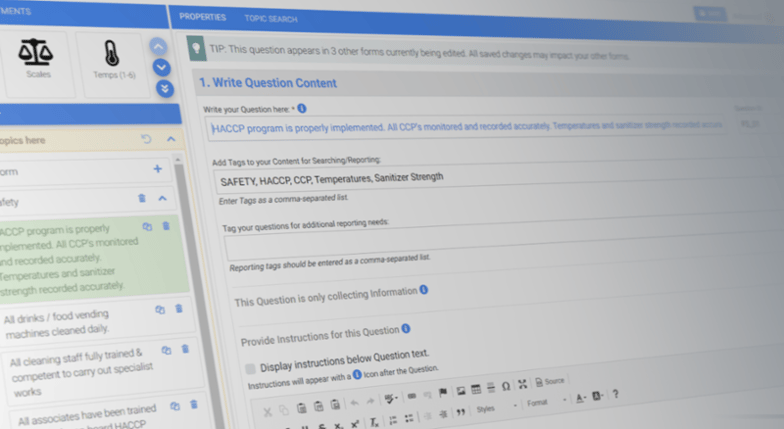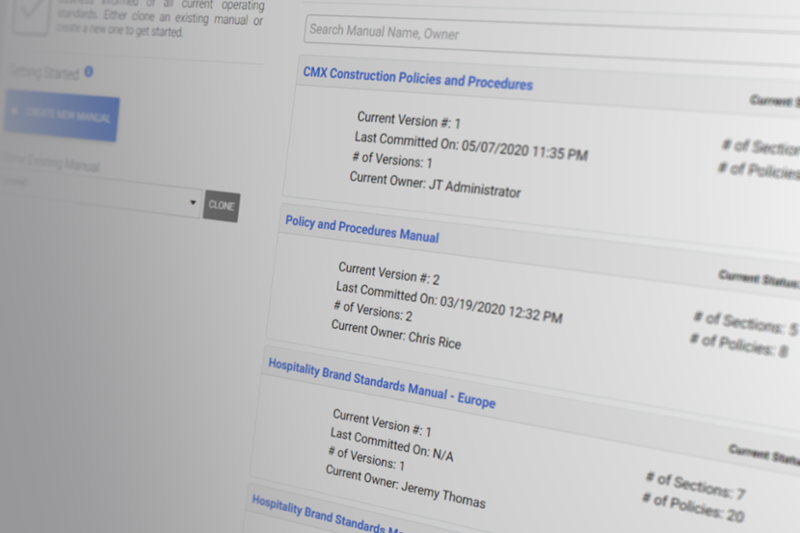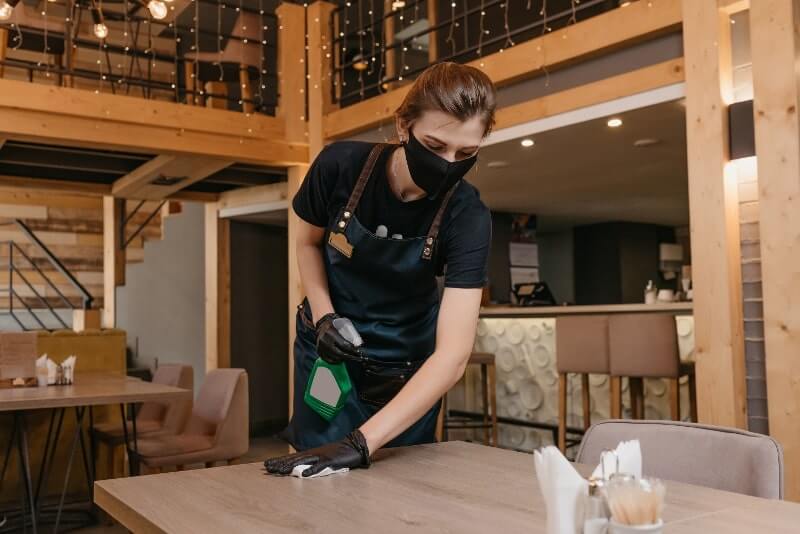What are SOPs?
Standard Operating Procedures (SOPs) are a set of written instructions or procedures that guide the day-to-day operations of your retail food establishment or food manufacturing facility. SOPs are a key component of an effective food safety program as it ensures that all the requirements for quality and safety are met each time the operations are performed. While it’s only one part of the HACCP plan, it covers all the different operations within a facility and includes specific details on how you intend to carry out these operations. SOPs focus on detailed routines, tasks, or functions and because of the complexity of certain processes, a single establishment or facility can have hundreds of SOPs.
Why use SOPs?
Standard Operating Procedures are the foundation of an effective food safety system—they are absolutely essential. They provide employees with specific information and detailed instructions, so they’re able to perform their activities accurately and efficiently. It should include corrective actions, monitoring procedures, verification procedures, and record-keeping procedures.
Within the hospitality industry or retail food establishments, every operation is unique, so SOPs can cover dozens of different tasks. Some common management areas include:
- Personnel (e.g., personal hygiene, disease control, training, etc.);
- Equipment and utensil maintenance (e.g., using and calibrating thermometers);
- Sanitary procedures (e.g., using and storing chemicals, waste disposal, etc.);
There are many more SOPs that cover all procedures found within a facility. It should also be noted that an SOP for the same task in one facility might not be the same for another, as each organization is unique, and equipment and environments can vary.
What’s included in SOPs?
In order to better understand what elements are included in an SOP, let’s look at a process that is applicable to almost every retail food establishment or manufacturing facility. The SOP for Food Contact Surfaces covers all tasks relating to the way kitchen equipment and kitchenware are cleaned and sanitized.
1. Instructions
There has to be a well-defined set of instructions that are specific to the equipment that should be used. In other words, you cannot use the same set of instructions for cleaning if you use both a dishwasher or a sink in your facility—there should be distinct steps for either approach. It should give the employee a step-by-step guide to proper cleaning of all surfaces that come into contact with food, whether they use a kitchen sink or dishwasher.
2. Monitoring
This section gives the employees a guide on how to inspect food contact surfaces visually and physically (e.g., testing chemical residues) to make sure they’re clean. It could point to specific hard-to-reach places that often harbor debris, and could even make mention of interior parts or pressure gauges to make sure that all equipment is in working order.
3. Corrective Actions
It’s essential that SOPs include corrective actions once a deviation occurs. In the case of food surfaces, it could cover the retraining of employees, or fixing broken washing equipment. Again, there should be separate instructions for the different cleaning setups.
4. Verification and record-keeping
All the monitoring activities and corrective actions should be recorded and documented by employees. The food service manager will need to verify that employees have completed the monitoring and corrective actions properly. Together with daily checklists, these documents should be kept for at least one year.
Benefits of implementing SOPs
With a well-written SOP in place, you can increase efficiency among employees and ensure consistency across various departments within your facility. Whether your business is big or small, a step-by-step procedure is the best way to avoid deviations and to provide clarity for employees on what is expected, for maintaining compliance and delivering quality service and safe food.

Brands including Buffalo Wild Wings and Firehouse Subs® leverage CMX1's ActivityStudio® for their SOPs
So why put in the time and effort to create SOPs?
Besides the fact that SOPs are a requirement of a food safety program, there are other benefits:
- You save time—instead of describing the same task to employees over and over again, a single set of guidelines will help them to perform the task correctly and efficiently.
- You ensure safety and reduce risk—following guidelines will not only help to keep your employees safe, but it also ensures the production of safe food and mitigates risk.
- You ensure compliance—guidelines help your employees to comply with relevant laws and regulations, which safeguards your organization against citations or worse, litigation.
- You improve consistency—having employees follow the same properly detailed procedure will ensure that they follow the same method, and do it in the same way. This will ensure uniform performance and consistency.
Things to consider when writing an effective SOP
In order for an SOP to be effective, it 1) must be understandable and 2) it must be followed. When an SOP is written in a clear and straightforward manner, it makes it easier to understand for employees across the board. Complicated SOPs might look good on paper, but in reality, it would be useless if it cannot provide specific instructions for employees to follow.
In order for an SOP to be effective, it 1) must be understandable and 2) it must be followed. When an SOP is written in a clear and straightforward manner, it makes it easier to understand for employees across the board. Complicated SOPs might look good on paper, but in reality, it would be useless if it cannot provide specific instructions for employees to follow.
To write a thorough SOP, it’s essential to answer 5 W’s and 1 H. In other words, look at the particular task or duty at hand and specify the who, why, what, where, when, and how:
- Who will perform the task;
- Why the task is necessary for your establishment/facility;
- What materials, equipment, or tools are needed to perform the task;
- Where the task will be performed;
- When the task will be performed;
- How the employee will perform the task.
Asking these questions will give you a complete picture of what exactly is needed to perform and complete the task, from start to finish. That said, there are a few practical guidelines you can follow, to make sure that the message in your SOP comes across clearly. According to the FDA Group, one of the best things you can do, is to keep your end-user in mind—the employee who will actually read the SOP and follow it. They make the following suggestions:
- Write clearly — while it may be more excusable in business policies, SOPs are not the place for technical jargon. Make sure to avoid words like ‘may’—it gives employees the idea that the decision is up to them, or that the procedure is flexible, whereas ‘must’ is always mandatory. Keeping sentences brief and using common terms, will help remove any potential for ambiguity and thus increase accountability.
- Use verbs — action words (like ‘evaluate’) help to direct employees in exactly what they should do. It avoids confusion and puts the spotlight on the actual actions that are to be performed.
- Make it visual — it’s no secret that large chunks of text are difficult to digest. You don’t want to risk your employees merely scanning over a document without giving it attention. Add important points in bulleted or numbered form. This will draw the reader’s attention and make sure they focus on the most important information.
‘A failure to follow written procedures’ is cited as one of the most frequent violations of the FDA’s requirements. It’s therefore essential to create SOPs that are clear enough for your employees to understand.
Download our guide on Policy Management
How to effectively implement SOPs in your food business
As mentioned, one establishment can have several SOPs, and each of these needs to be detailed, clear, and applicable to the specific procedure. An SOP can take the form of simple checklists, step-by-step procedures, or process flow charts. Whatever format you choose, it should help the employee get a better understanding of the task they are to perform. But a neatly written procedure is not very useful if you don’t implement and distribute it properly…
“…going digital is the way forward…”
It’s absolutely essential to have a dedicated space where all your SOPs are stored. There are innumerable documents within an organization, and SOPs often end up with other documents in a dusty binder on a shelf somewhere. This is why going digital is the way forward. Not only can you create more effective ‘visual’ SOPs, but employees from all levels within your organization can access these documents at a click of a button.
“…organizations change over time…your SOPs change too…”
In an ideal world, you’d create your SOPs and then never need to review them again. But this is not realistic. As your organization changes over time, so do the various workflows and procedures, and therefore requires that SOPs are updated. The FDA requires that SOPs are distributed promptly within the organization and that all employees confirm the receipt and comprehension of it. But with hundreds (if not thousands) of SOPs, how do you manage these changes and make sure that employees have access to the latest updated version? This is almost impossible with pen-and-paper based systems. You don’t have control over photocopies that employees make of SOPs and therefore old versions might circulate long after you’ve updated the SOP! By changing to digital systems, you can easily review and update SOPs and be sure that all employees are following the updated version.
How CMX1’s technology can assist with SOP development, management, and measurement
Well-known brands like Buffalo Wild Wings and Firehouse Subs® have already implemented digital routines to create checklists for cleaning and sanitizing routines, measuring customer service, and even food safety and temperature monitoring. But there is so much more you can do with this technology. With CMX1’s ActivityStudio®, you can create online checklists to make sure employees fully understand the procedures and thus follow them correctly. It provides management with immediate access to feedback and enables them to identify potential knowledge gaps they may have missed.
Download our guide on ActivityStudiotm
If you are a large retail food establishment, it becomes even more important to ensure consistency across your different locations. ActivityStudio® allows you to verify SOPs and address conformances via Corrective and Preventive Actions (CAPAs) workflows across all locations, which means you are audit-ready for a regulatory inspection.

Digital Policy Manuals can be created and managed with CMX's PolicyStudio
Keen to know more? Get in touch to learn how CMX1 enables you to create, improve and optimize your SOPs, ensuring informed employees, safe food, and consistent performance against brand standards.




